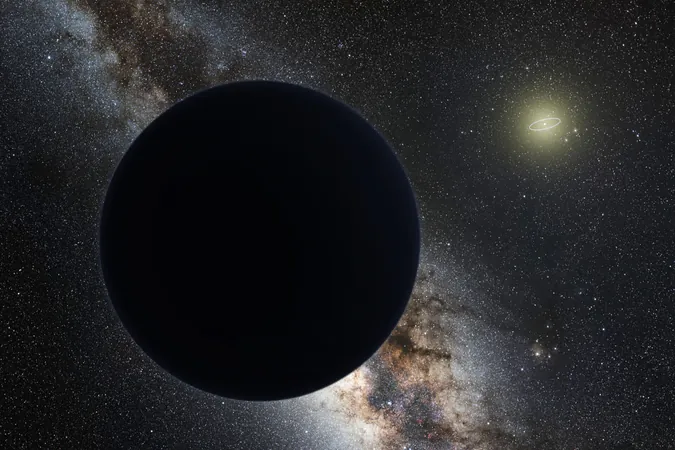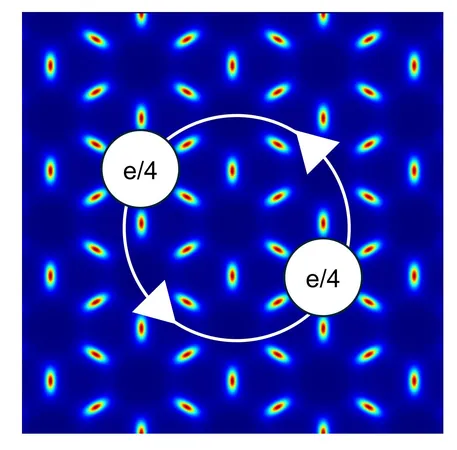
Unveiling the Mystery of Planet Nine: Can a Network of Tiny Telescopes Hold the Key?
2024-11-18
Author: Amelia
Introduction
For centuries, the hunt for new planets beyond Neptune has captivated astronomers. Since William Herschel's groundbreaking discovery of Uranus in 1781, we’ve seen the revelation of Neptune in 1846, but no other large planets have joined the ranks—only dwarf planets like Pluto. Speculation runs high about the existence of a potential “Planet Nine” or “Planet X” hiding in the far reaches of our solar system, but concrete evidence has remained elusive.
The Clustering of Orbits and the Hypothesis of Planet Nine
Recent observations of an observed clustering of orbits among Trans-Neptunian Objects (TNOs) and Kuiper Belt Objects (KBOs) have spurred interest. These peculiar orbital patterns suggest something massive might be lurking out there, possibly a super-Earth that wields its gravitational influence across the outer solar system. Scientists hypothesize that this potential Planet Nine could be a massive body, around five times the size of Earth, orbiting the Sun at a distance ten times greater than that of Neptune.
The Challenge of Detection
Despite these tantalizing hints, astronomers have scoured the skies without catching a glimpse of Planet X, leading to various theories—ranging from it being a primordial black hole to doubts about its very existence. However, a fascinating new approach put forth in a recent paper on the arXiv preprint server proposes a clever solution utilizing a method known as occultation.
Occultation: A Potential Solution
Occultation involves observing a star as an asteroid or other celestial body passes directly in front of it, blocking the star's light. This technique has previously led to groundbreaking discoveries. For example, astronomers identified the ring system of the asteroid Chariklo through an occultation event, while amateur astronomers have successfully mapped small asteroids using this method.
Proposed Network of Telescopes
Building on this concept, the researchers recommend the development of a network consisting of 200 40-centimeter telescopes arranged 5 kilometers apart to form a massive occultation array spanning 1,000 kilometers. Each telescope would capture the occultation from different angles, providing a wealth of data regarding the shapes and orbits of TNOs.
Projected Outcomes
Over the course of a decade-long survey, they project that this array could identify approximately 1,800 new TNOs. Crucially, simulations suggest that this setup can decisively reveal the presence of any planet with a mass similar to that of Earth, located within 800 astronomical units (AU) of the Sun. This means if Planet X truly exists, this innovative study has the potential to confirm its nature and characteristics.
Cost and Potential Benefits
Remarkably, the entire array is estimated to cost around $15 million—a relatively modest sum for a project of such astronomical significance. Even if Planet Nine remains elusive, the data gathered could significantly enhance our understanding of the outer solar system and shed light on how sunlight influences the orbits of these distant celestial bodies.
Conclusion
The quest for answers is on, and as more amateur and professional astronomers join forces, we may be closer than ever to unmasking the secrets of our cosmic neighborhood. Will this ambitious project be the breakthrough we've been waiting for? The sky may soon hold the key to one of astronomy's most tantalizing mysteries!









 Brasil (PT)
Brasil (PT)
 Canada (EN)
Canada (EN)
 Chile (ES)
Chile (ES)
 España (ES)
España (ES)
 France (FR)
France (FR)
 Hong Kong (EN)
Hong Kong (EN)
 Italia (IT)
Italia (IT)
 日本 (JA)
日本 (JA)
 Magyarország (HU)
Magyarország (HU)
 Norge (NO)
Norge (NO)
 Polska (PL)
Polska (PL)
 Schweiz (DE)
Schweiz (DE)
 Singapore (EN)
Singapore (EN)
 Sverige (SV)
Sverige (SV)
 Suomi (FI)
Suomi (FI)
 Türkiye (TR)
Türkiye (TR)